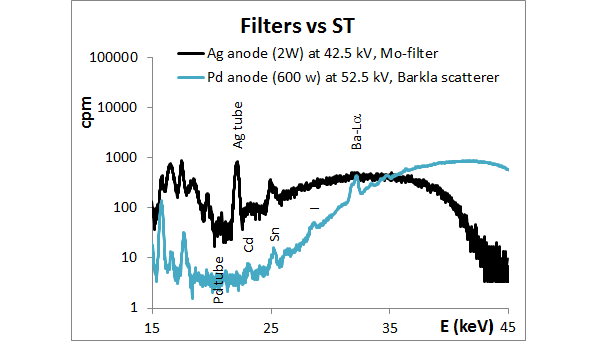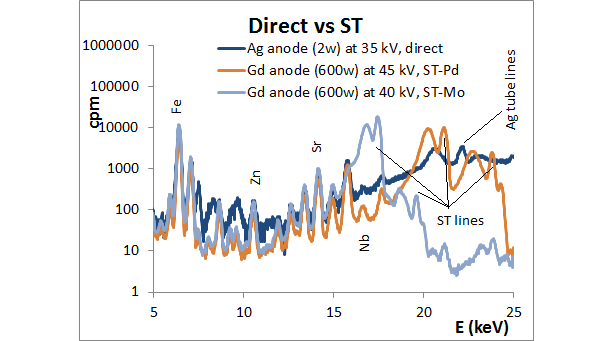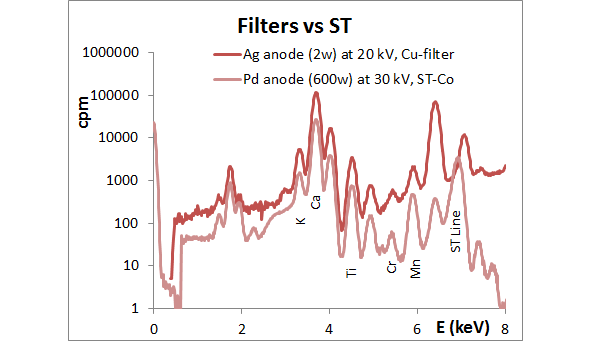3.1.2.4 Comparison of performance: Direct tube, Filtered and ST excitation
The use of filters or secondary targets always pursues to improve the performance for a given analytical problem. However, the main drive to select one or the other approach is given by the type of x-ray tube available.
Attenuation by filtering can reduce the intensity of the flux of photons with the energy selected for excitation by a factor of a few percent, whereas the intensity of the flux of ST emission is at least one or two orders of magnitude lower than the direct x-ray tube radiation. Therefore, filters are advantageous when low to medium power x-ray tubes are used, whereas secondary targets require the use of medium to high power tubes.
The arrangement of filters requires of less complex design and associated mechanical construction than the ST arrangements in tri-axial geometry. Filter based spectrometers are therefore cheaper than ST based ones.
The additional advantage of ST excitation lies in the fact that the spectral background is drastically reduced as compared to filtered or direct beams. As detection limits are proportional to the square root of the noise, direct and tube-filtered excitation produces a larger continuum (noise) thus worsening the detection limits. The Figures below depict the spectra of a soil sample measured with instruments of each of the types.



